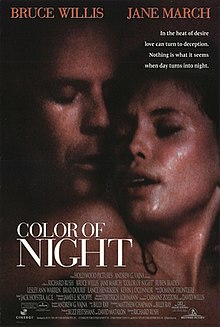
Natural Born Killers is a 1994 American romantic crime action film directed by Oliver Stone and starring Woody Harrelson, Juliette Lewis, Robert Downey Jr., Tommy Lee Jones, and Tom Sizemore. The film tells the story of two victims of traumatic childhoods who become lovers and mass murderers, and are irresponsibly glorified by the mass media.

Charlie's Angels: Full Throttle is a 2003 American action comedy film directed by McG and written by John August, and Cormac and Marianne Wibberley. It is the sequel to 2000's Charlie's Angels and the second installment in the Charlie's Angels film series, which is a continuation of the story that began with the television series of the same name by Ivan Goff and Ben Roberts.
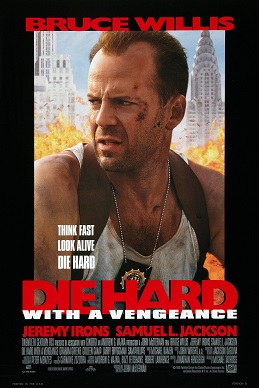
Die Hard with a Vengeance is a 1995 American action thriller film directed by John McTiernan and written by Jonathan Hensleigh, which is based on the screenplay Simon Says by Hensleigh and the characters created by Roderick Thorp for his 1979 novel Nothing Lasts Forever. Die Hard with a Vengeance is the third film in the Die Hard film series after Die Hard 2 and was later followed by Live Free or Die Hard and A Good Day to Die Hard.

Tombstone is a 1993 American Western film directed by George P. Cosmatos, written by Kevin Jarre, and starring Kurt Russell and Val Kilmer, with Sam Elliott, Bill Paxton, Powers Boothe, Michael Biehn, and Dana Delany in supporting roles, as well as narration by Robert Mitchum.
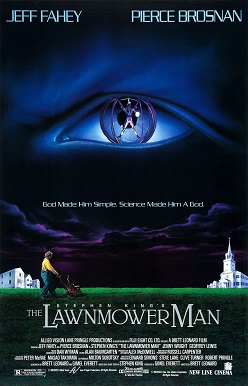
The Lawnmower Man is a 1992 science fiction horror film directed by Brett Leonard, written by Leonard and Gimel Everett, and starring Jeff Fahey as Jobe Smith, an intellectually disabled gardener, and Pierce Brosnan as Dr. Lawrence "Larry" Angelo, a scientist who decides to experiment on him in an effort to give him greater intelligence. The experiments give Jobe superhuman abilities, but also increase his aggression, turning him into a man obsessed with evolving into a digital being.
Jane March Horwood is an English film actress and former model.
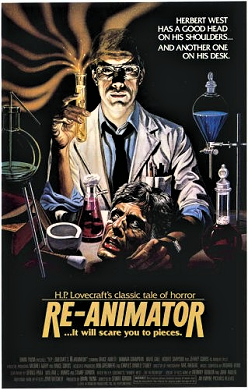
Re-Animator is a 1985 American comedy horror film loosely based on the 1922 H. P. Lovecraft serial novelette "Herbert West–Reanimator". Directed by Stuart Gordon and produced by Brian Yuzna, the film stars Jeffrey Combs as Herbert West, a medical student who has invented a reagent which can re-animate deceased bodies. He and his classmate Dan Cain begin to test the serum on dead human bodies, and conflict with Dr. Carl Hill, who is infatuated with Cain's fiancée and wants to claim the invention as his own.
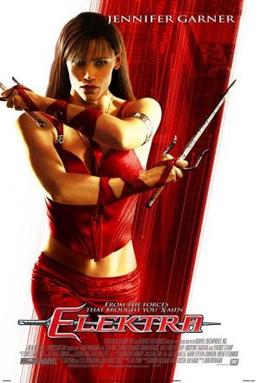
Elektra is a 2005 superhero film based on the Marvel Comics character Elektra Natchios and directed by Rob Bowman. It is a spin-off from the film Daredevil (2003), with Jennifer Garner reprising her role as the titular character. The story follows Elektra, an assassin who must protect a man and his prodigy daughter from another assassin who was hired by the Hand. Goran Višnjić, Will Yun Lee, Cary-Hiroyuki Tagawa, and Terence Stamp also star.
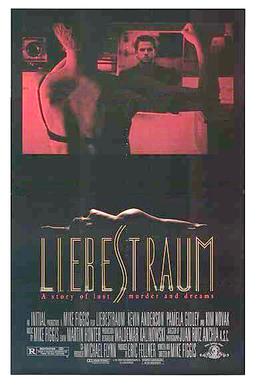
Liebestraum is a 1991 American mystery film written and directed by Mike Figgis and starring Kevin Anderson, Pamela Gidley, Bill Pullman, Zach Grenier, Alicia Witt and Taina Elg, with Kim Novak in her last film role.
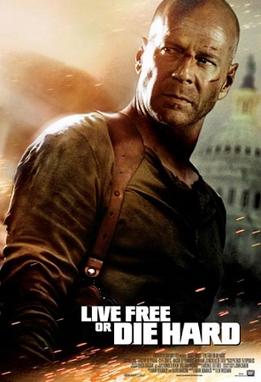
Live Free or Die Hard is a 2007 American action thriller film directed by Len Wiseman, and serves as the fourth installment in the Die Hard film series. It is based on the 1997 article "A Farewell to Arms" written for Wired magazine by John Carlin. The film's name is adapted from New Hampshire's state motto, "Live Free or Die".
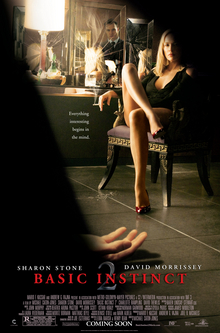
Basic Instinct 2 is a 2006 erotic thriller film and the sequel to 1992's Basic Instinct. The film was directed by Michael Caton-Jones and produced by Mario Kassar, Joel B. Michaels, and Andrew G. Vajna. The screenplay was by Leora Barish and Henry Bean. It stars Sharon Stone, who reprises her role of crime mystery author Catherine Tramell, and David Morrissey. The film is an international co-production of German, British, American, and Spanish production companies.

Striking Distance is a 1993 American action thriller film starring Bruce Willis as Pittsburgh Police homicide detective Thomas Hardy. The film co-stars Sarah Jessica Parker, Dennis Farina, and Tom Sizemore. It was directed by Rowdy Herrington and written by Herrington and Marty Kaplan. The film was shot on location throughout Pittsburgh; its early title was Three Rivers.

Richard Rush was an American film director, scriptwriter, and producer. He is known for directing The Stunt Man, for which he received a nomination for the Academy Award for Best Director. His film Color of Night won a Golden Raspberry Award as the worst film of 1994, but Maxim magazine also singled the film out as having the best sex scene in film history. Rush, whose directing career began in 1960, also directed Freebie and the Bean, a police buddy comedy/drama starring Alan Arkin and James Caan. He co-wrote the screenplay for the 1990 film Air America.

Cinergi Pictures Inc. was an American independent film production company founded by Andrew G. Vajna in 1989, after he had sold his interest in his first production company, Carolco International Pictures. The company had a number of major hit films, most notably Tombstone, Die Hard with a Vengeance and Evita. However, the majority of their films lost money. A string of box office bombs – including Super Mario Bros., Renaissance Man, Color of Night, Judge Dredd, and Burn Hollywood Burn – ultimately did the company in, and it was dissolved in 1998. Cinergi Pictures' library is now owned by Disney.

Jade is a 1995 American erotic thriller film written by Joe Eszterhas, produced by Robert Evans, directed by William Friedkin, and starring David Caruso, Linda Fiorentino, Chazz Palminteri, Richard Crenna, and Michael Biehn. The original music score was composed by James Horner based on a song composed by Loreena McKennitt. The film was marketed with the tagline "Some fantasies go too far."

Sunset is a 1988 American crime mystery western film written and directed by Blake Edwards and starring Bruce Willis as Western actor Tom Mix, who teams up with lawman Wyatt Earp, portrayed for the second time in a theatrical film by James Garner. Based on an unpublished novel by Rod Amateau, the plot has Earp and Mix solve a murder in Hollywood in 1929.

Postal is a 2007 German-American action comedy film co-written and directed by Uwe Boll, and starring Zack Ward, Dave Foley, Chris Coppola, Jackie Tohn, J.K. Simmons, Verne Troyer, Larry Thomas, David Huddleston and Seymour Cassel.

House at the End of the Street is a 2012 American psychological thriller film directed by Mark Tonderai that stars Jennifer Lawrence. The film's plot revolves around a teenage girl, Elissa, who along with her newly divorced mother Sarah, moves to a new neighborhood only to discover that the house at the end of the street was the site of a gruesome double homicide committed by a 17-year-old girl named Carrie Anne who had disappeared without a trace four years prior. Elissa then starts a relationship with Carrie Anne's older brother Ryan, who lives in the same house, but nothing is as it appears to be.

A Good Day to Die Hard is a 2013 American action thriller film and the fifth and final installment in the Die Hard film series. The film was directed by John Moore and written by Skip Woods, and stars Bruce Willis as John McClane in his final film in the franchise. The main plot finds McClane traveling to Russia to get his estranged son, Jack, an undercover CIA agent, out of prison. He is soon caught in the crossfire of a global terrorist plot. Alongside Willis, the film also stars Jai Courtney, Cole Hauser, Yulia Snigir, and Sebastian Koch.

Evil Dead is a 2013 American supernatural horror film directed by Fede Álvarez, who co-wrote the screenplay with Rodo Sayagues. Dubbed a "re-imagining" of The Evil Dead (1981), the film is the fourth installment in the Evil Dead film series. It stars Jane Levy, Shiloh Fernandez, Lou Taylor Pucci, Jessica Lucas, and Elizabeth Blackmore. The story follows a group of five people under attack by deadites in a remote cabin in the woods.
